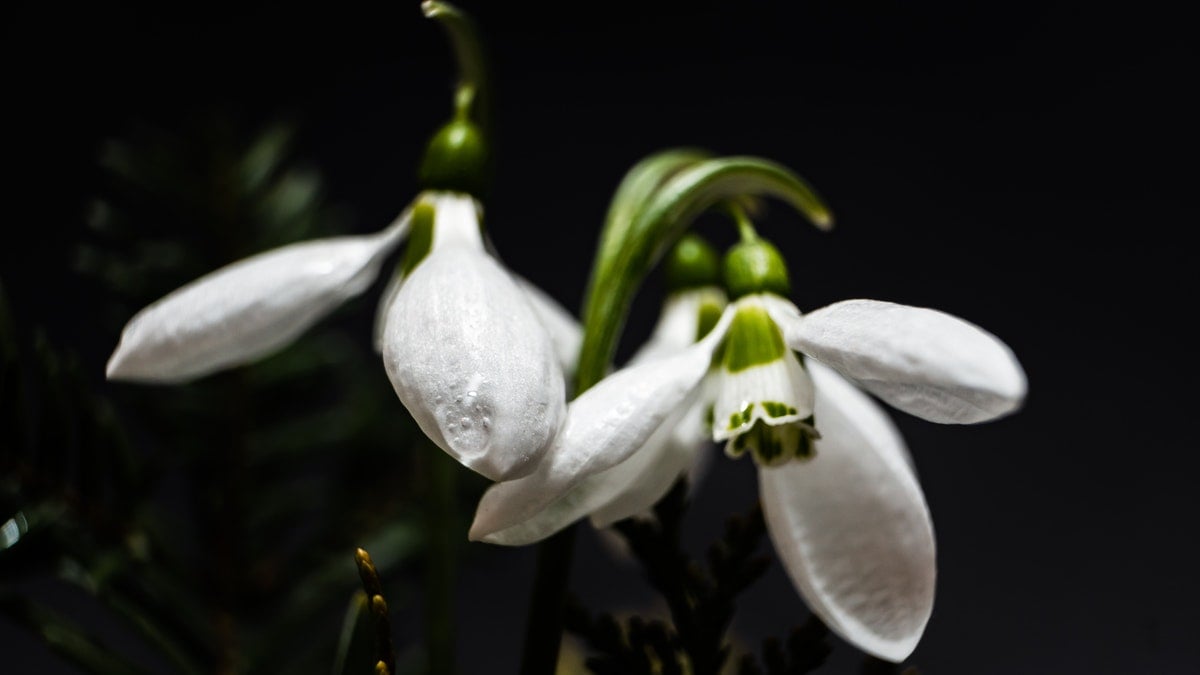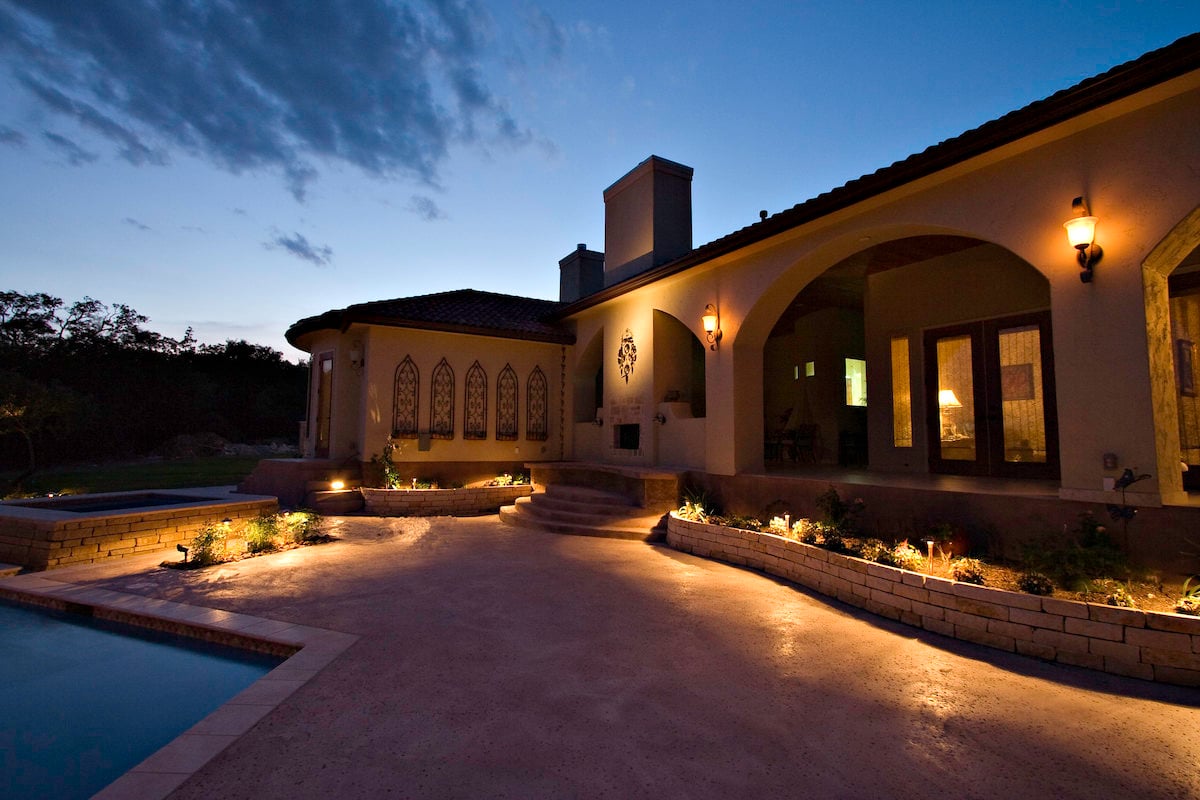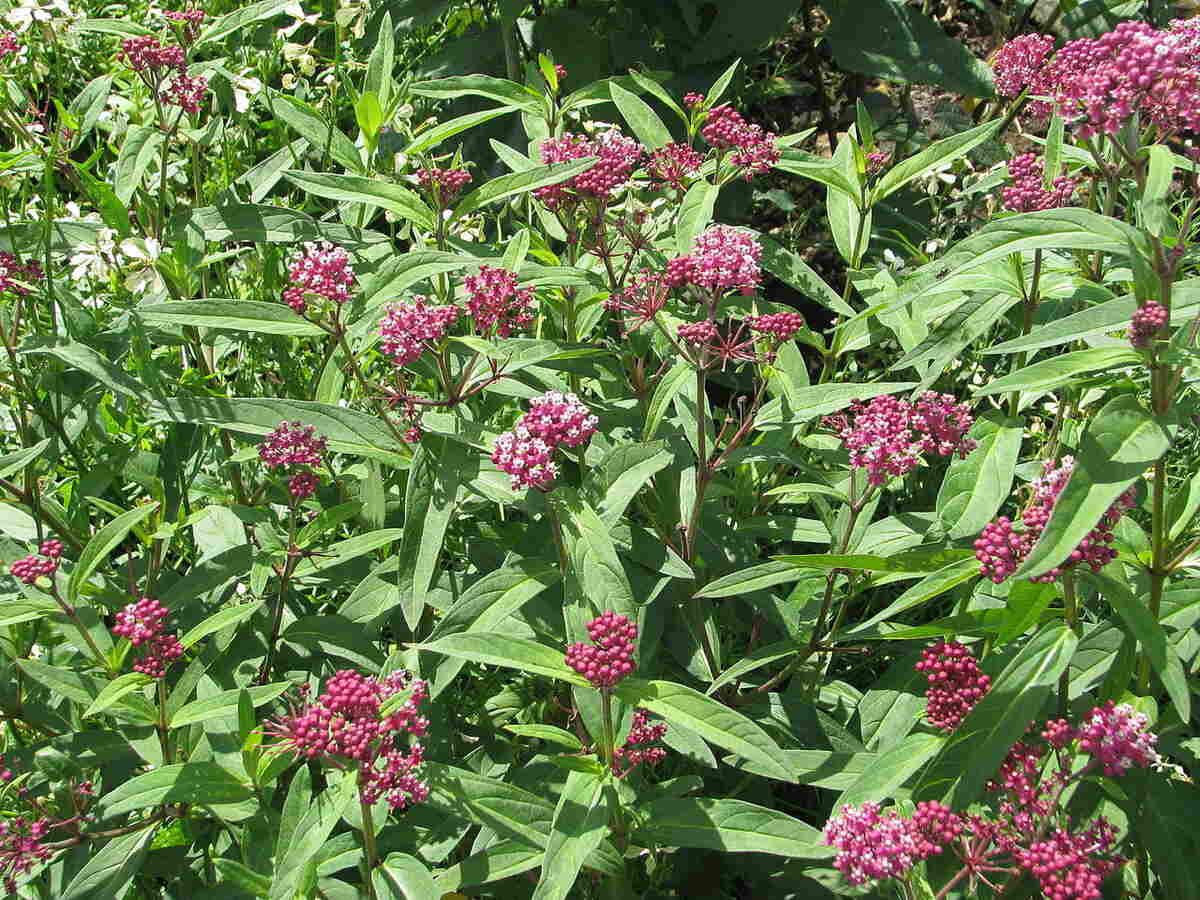
The moon and stars aren’t the only natural sources of light in the dark. Night-blooming plants, with their light-colored and fragrant flowers, emit a soft glow until dawn. Planting these can help create a serene and calming atmosphere. Your moon garden will be filled with moonlight magic as you discover 18 of the best night-blooming flowers.
To get the most from your night-time garden, experts recommend choosing a spot with plenty of moonlight or near a window or landscape lighting to create a similar effect.
With the location of your moon garden locked down, it’s time for the fun part: selecting your plants.
18 Night-Blooming Plants for Your Moon Garden
1. Moonflower (Ipomoea alba)

Also known as tropical white morning glory, this vining perennial is perfect for vertical gardening using a trellis, pergola, or other supportive structure. Blossoming in the late afternoon and lasting only through the night, the moonflower’s large, white flowers associated with the moon are heart- or trumpet-shaped and give off a lemon scent.
- USDA Hardiness Zones: 10 to 12
- Examples of moonflower: Pink moonflower (Ipomoea muricata) and scarlet morning glory (Ipomoea hederifolia)
- Care: Low-maintenance, deer-resistant, and drought-tolerant. Moonflower grows in a range of well-drained soils. Moonflower can become invasive — keep it in check by removing seed pods before they open.
- Blooms: White; however, purple blooms are also available; flowers in summer and fall
- Fragrance: Strong, lemony scent
- Cost: Get a pack of 25 seeds for about $3.
2. Evening Primrose (Oenothera biennis)

A biennial wildflower with hairy leaves and yellow flowers, evening primrose will come back on its own twice.
Evening primrose is one of those nocturnal plants that attracts hummingbirds, butterflies, and other pollinators to your garden. For centuries, Native Americans have used this plant for medicinal and food purposes.
- USDA Hardiness Zones: 3 to 11
- Examples of evening primrose: Missouri evening primrose (Oenothera macrocarpa) and Lemon Sunset (Oenothera longifolia)
- Care: Very low-maintenance and drought-tolerant, evening primrose needs little watering. Plant evening primrose in full sun and well-drained soil.
- Blooms: Yellow/golden, some varieties can be pink or white. Evening primrose flowers in spring, summer, and fall.
- Fragrance: Sweet fragrance similar to an orange
- Cost: A seed packet can run you close to $8.
3. Night-Blooming Jasmine (Cestrum nocturnum)
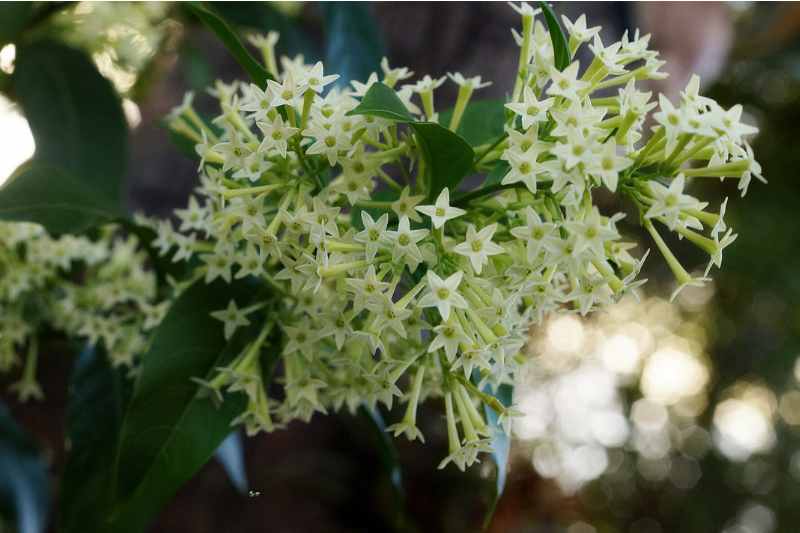
Grown mostly for its pleasant fragrance, this broadleaf evergreen shrub requires full sun or partial shade and moist, well-drained soil. Night-blooming jasmine (also called night-blooming jessamine) can grow up to 10 feet tall, and its columnar shape is perfect for planting as a privacy screen or windbreak.
Fragrant blooms appear on these bushes at night from January through June.
- USDA Hardiness Zones: 8 to 11
- Care: Low-maintenance. Prune to shape night-blooming jasmine, water regularly, and fertilize in summer every few weeks.
- Blooms: Cream, green, white, yellow, or pink flowers. Night-blooming jasmine also produces purple, white, or red berries.
- Fragrance: Very strong, sweet scent permeating several hundred feet around the plant
- Cost: Plan to spend around $5 for a potted plant
4. Four O’Clocks (Mirabilis jalapa)

Per their name, these flowers tend to bloom in the late afternoon, anywhere between 4 p.m. and 8 p.m. Also known as the Marvel-of-Peru, these deciduous shrubs can be grown as either perennials or annuals, depending on climate, and will attract hummingbirds and other pollinators. Grow four o’clocks in full sun or part shade.
- USDA Hardiness Zones: 9 to 10
- Examples of four o’clock: Alba, Kaleidoscope, and Jingles
- Care: Low-maintenance and resistant to drought, disease, and pests. Fertilize four o’clocks only if the leaves turn pale green.
- Blooms: Can be white, copper, purple, yellow, magenta, multicolored, or pink. Four o’clock blooms are funnel-shaped and grow in clusters of one to five flowers.
- Fragrance: Sweet, subtle citrusy fragrance
- Cost: A pack of seeds can cost you $5.
5. Tuberose (Polianthes tuberosa)
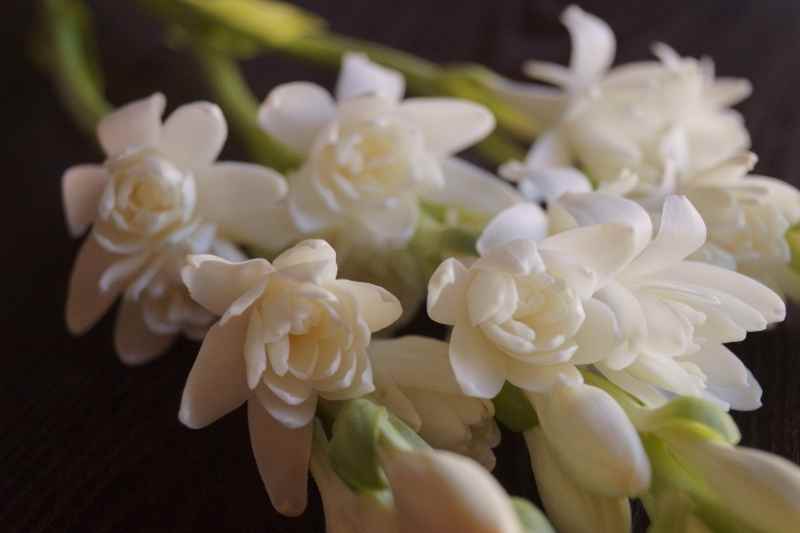
A plant native to Mexico, tuberose is commonly used in Hawaiian leis and thrives in the heat of summer, with nocturnal flowers blooming in August and September. Plant bulbs in full sun and well-drained soil, and be sure to space them 8 inches apart in 2 feet of soil to accommodate their growth.
- USDA Hardiness Zones: 7 to 10
- Examples of tuberose: Single Mexican and Double Pearl
- Care: Add 3-4 inches of mulch to keep the soil moist, and use slow-release fertilizer at the beginning of summer.
- Blooms: Large, white blooms on stems that can reach 3 feet in height
- Fragrance: Peaches-and-cream-type aroma with floral notes
- Cost: You can buy 10 medium-sized bulbs for about $26.
6. Angel’s Trumpet (Brugmansia)

An herbaceous perennial, angel’s trumpet is a self-pollinating, small tree or large shrub that can reach up to 15 feet in height. Plant angel’s trumpet in partial shade, and prepare for showy, foot-long, trumpet-shaped blooms from spring through fall.
Note: These night garden plants are poisonous and sensitive to frost. In winter, consider bringing it inside — it also does well as a houseplant.
- USDA Hardiness Zones: 9 to 11
- Examples of angel’s trumpet: Betty Marshall, Daybreak, Isabella
- Care: Low-maintenance; doesn’t require pruning, but doing so in fall can encourage more new growth. Fertilize weekly and look out for pests, such as spider mites. It prefers water that’s been left out for a day rather than fresh from the tap.
- Blooms: Yellow flowers, as well as pink, white, apricot, or orange. Angel’s trumpet blooms come in varieties of singles, doubles, triples, quadruples, and shredded-looking blossoms.
- Fragrance: Sometimes overpowering. Depending on variety, scents can range from lemony to minty to musky to citrusy to floral.
- Cost: Seeds around $10, live plant around $20
7. Queen of the Night (Epiphyllum oxypetalum)
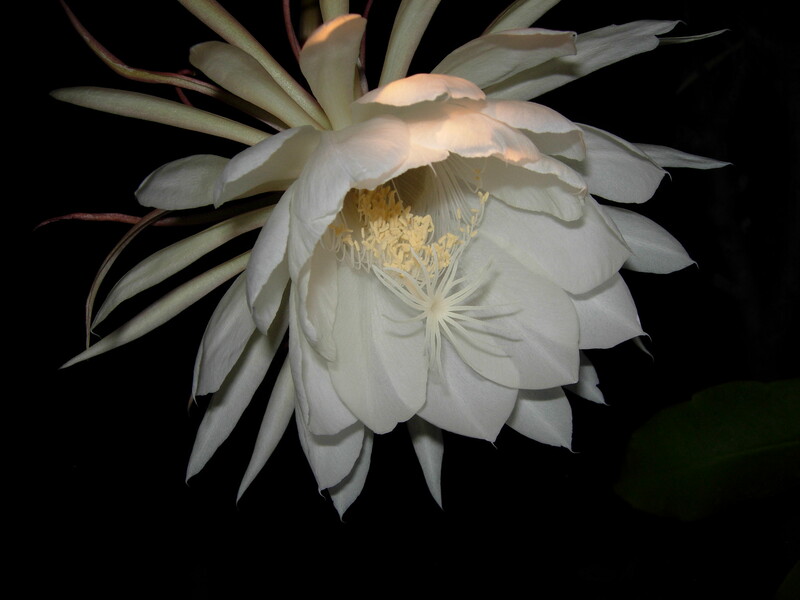
A night-blooming cereus (or cactus), sometimes referred to as an orchid cactus, queen of the night’s large, white blooms open at dusk for just one night per year, returning to a closed bud form the next morning. Like many succulent plants, this one does best in full sun or partial shade and well-drained soils and is perfect as a houseplant.
- USDA Hardiness Zones: 10 to 12
- Care: Low-maintenance. Water queen of the night monthly in winter and bring it indoors to protect it from the cold. Best if grown in a container.
- Blooms: Large, attractive, white blooms
- Fragrance: Sweet fragrance with floral notes
- Cost: Get one rooted plant for about $10.
8. Casablanca Lily (Lilium ‘Casa Blanca’)

Praised for its lovely fragrance, this hybrid lily is often used as cut flowers. Casablanca Lily is easy to grow, as long as it’s done in full sun or partial shade and well-drained soil. It has flowers that open at night in June and July. Keep an eye out for pests, such as lily leaf beetles and aphids, and the lily mosaic virus.
- USDA Hardiness Zones: 5 to 8
- Care: Low-maintenance and grown from perennial bulbs; mulch to maintain moisture. Plant in well-drained soil to avoid bulb rot. Deadhead blooms after flowering.
- Blooms: White blooms
- Fragrance: Strong, sweet smell
- Cost: A pack of bulbs can be purchased for $6.
9. Flowering Tobacco (Nicotiana alata)

Place flowering tobacco near a window or patio doorway to enjoy the aromatic pleasantries of these night-blooming plants. Thriving best in full sun or partial shade, be sure to allow 1 to 3 feet of space between each plant.
The large, trumpet-shaped blossoms open nightly in summer and fall, but its buds can still attract pollinators, such as butterflies and hummingbirds, during the day.
- USDA Hardiness Zones: 10 to 11
- Examples of flowering tobacco: Baby Bella Antique Red, Lime Green, and Saratoga Rose
- Care: Water regularly, as this plant has a low drought tolerance. Plant in spring after the last frost.
- Blooms: Red, purple, green, pink, white, or yellow flowers, depending on type
- Fragrance: Sweet fragrance, reminiscent of jasmine
- Cost: Get 750 seeds for around $3.
10. Gardenia (Gardenia jasminoides)

A top pick for corsages and wedding bouquets, this night-blooming, evergreen shrub opens its flowers in spring and summer. Also grown as a houseplant, gardenia jasminoides flourishes in acidic, well-drained soil and locations that receive full sun or partial shade.
- USDA Hardiness Zones: 7 to 11
- Examples of gardenia: August Beauty, Crown Jewel, Fortuniana
- Care: Deadhead spent blooms and prune shrubs into the desired shape. Water when the soil feels dry (about twice per week). In summer, fertilize every couple weeks.
- Blooms: Various colors, including white, cream, and yellow
- Fragrance: Sweet, jasmine-like scent
- Cost: Expect to drop around $40 for a live, potted plant.
11. Night Gladiolus (Gladiolus tristis)

Named after the Latin word for “sword,” as they boast a long, pointed stalk and ostentatious blooms, the night gladiolus is resistant to deer and drought and blooms nightly in early spring.
- USDA Hardiness Zones: 7 to 8
- Care: Plant in full sun and well-drained soil. Night gladiolus doesn’t need much water. Allow it plenty of space to grow.
- Blooms: White or yellow
- Fragrance: Scent has hint of spice
- Cost: Spend $4 on a packet of seeds.
12. Night Phlox (Zaluzianskya)

Perfect for adding bursts of color among the mostly pale and white blooms typical for night garden flowers, night phlox — aka “midnight candy” — comes in purple, red, or white colors. A low-growing ground cover native to South Africa, its buds open at dusk and emit a pleasing aroma.
- USDA Hardiness Zones: 9 to 10
- Care: Plant in full sun and well-drained soil; drought-tolerant but do best with regular watering. Can be grown in-ground or in containers.
- Blooms: Purple, red, or white
- Fragrance: A mix of honey, almond, and vanilla
- Cost: For about $5, you can get a pack of 1,000 seeds.
13. Chocolate Daisy (Berlandiera lyrata)

As its name suggests, this wildflower is a plant that blooms at night and gives off the distinct smell of cocoa each evening. When a new day dawns, the blooms of this perennial fall to the ground. Its appearance is similar to a daisy’s; it’s resistant to deer and attracts pollinators with its sweet nectar.
- USDA Hardiness Zones: 4 to 10
- Care: Plant in well-drained soil. Doesn’t need much water, fertilizer, or mulch. Deadhead to encourage new growth.
- Blooms: Yellow petals with dark brown center; blooms from April through November
- Fragrance: Emits a chocolate aroma
- Cost: Get 20 seeds for around $7.
14. Red Flare Water Lily (Nymphaea ‘Red Flare’)

Perfect for your backyard pond or other water features, the tropical ‘Red Flare’ water lily sports reddish-purple blooms and maroon-colored leaves that sit atop the water’s surface. Flowers open nightly from July through October and glow in the moonlight.
- USDA Hardiness Zones: 9 to 11
- Care: Requires full sun and water temps that reach at least 60 degrees
- Blooms: Pink, red, or purple
- Fragrance: Light scent
- Cost: Purchase a seed packet for around $9.
15. Evening Rain Lilies (Zephyranthes drummondii)
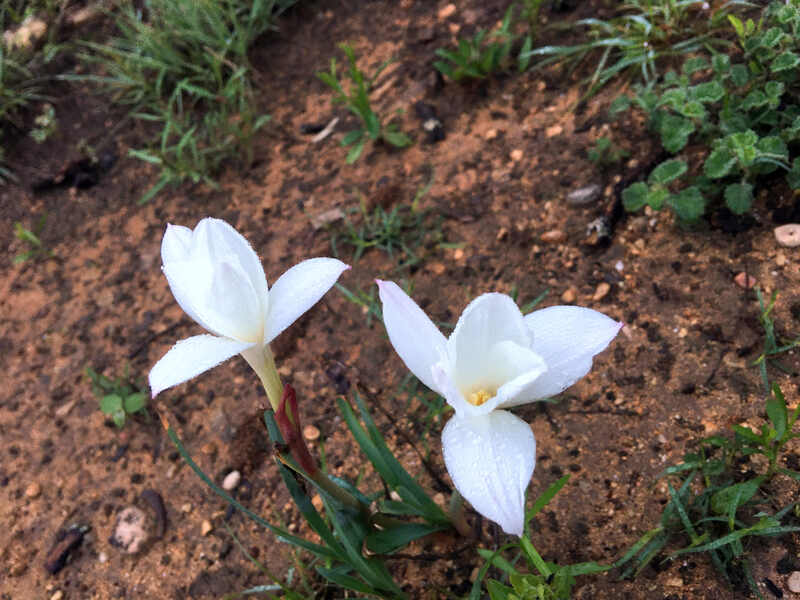
You’ll notice these night-bloomers open up soon after a rain, hence their name. Preferring full sun but able to grow in partial shade, evening rain lilies give off smaller blossoms from late summer to early fall.
- USDA Hardiness Zones: 7 to 10
- Examples of evening rain lily: Fedora (emits larger blooms)
- Care: Low-maintenance, but like a lot of night-blooming plants, it needs a moderate amount of water. Plant 6 inches apart to allow room for growth.
- Blooms: Pink or white blooms
- Fragrance: Lilac-like scent
- Cost: Bulbs can run you about $4 each.
16. Foamflower (Tiarella cordifolia)
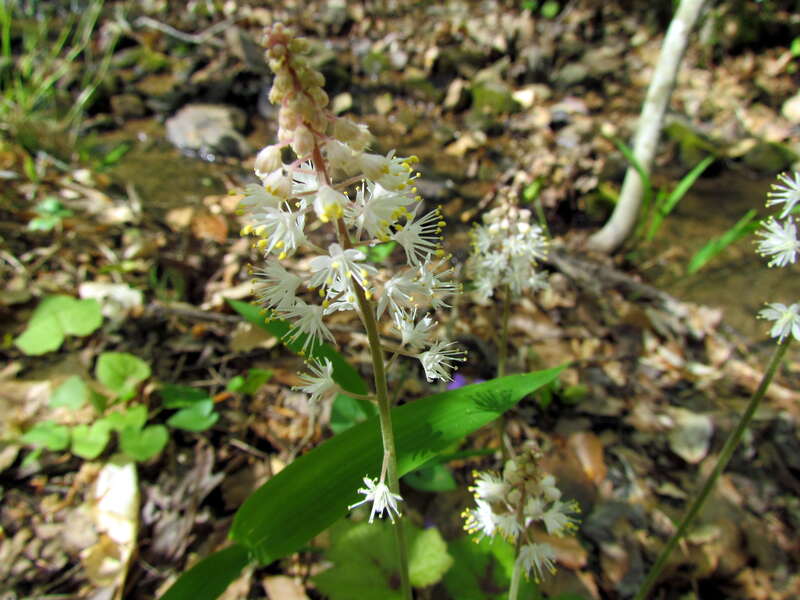
If your property doesn’t receive a lot of sun, opt to grow foamflowers. These shade-loving, perennial plants work great as a ground cover and are resistant to deer and rabbits. Named after the Greek word for “tiara,” these night plants sport showy, star-shaped flowers, and the overall plant spreads quickly via runners.
- USDA Hardiness Zones: 4 to 9
- Examples of foamflower: Brandywine, Oakleaf, Sugar and Spice
- Care: Low maintenance; keep the soil moist and deadhead spent blooms. Diseases and pests are not a problem for this plant.
- Blooms: Pink or white blooms in early spring through summer
- Fragrance: Pleasant scent
- Cost: Purchase potted for about $7 each.
17. Mock Orange (Philadelphus coronarius)

A deciduous shrub that prospers in various well-drained soils, mock orange should be in full sun or partial shade. Reaching 10 to 12 feet high and wide, this night-blooming plant works perfectly as a privacy hedge around your other moon garden plants.
- USDA Hardiness Zones: 4 to 8
- Examples of mock orange: Romantic Knight, Aurea, Minnesota Snowflake
- Care: Low-maintenance and winter-hardy; water when soil is dry to the touch. Fertilize yearly with compost, rather than nitrogen.
- Blooms: White blooms in early spring to early summer
- Fragrance: Hints of citrus
- Cost: Purchase a 3-foot, live shrub for around $80.
18. Dame’s Rocket (Hesperis matronalis)

While grown as a biennial, the Dame’s Rocket can last for years because of its self-seeding nature. A lover of full sun or partial shade, this night-blooming plant can thrive in a range of well-drained soils, is resistant to deer, and attractive to nighttime pollinators.
- USDA Hardiness Zones: 3 to 8
- Care: Low-maintenance; Deadhead spent flowers to encourage new growth and water regularly. Diseases and pests are not a problem.
- Blooms: Purple and white blooms
- Fragrance: Sweet scent likened to a blend of violet and cloves
- Cost: Purchase a large amount of seeds for around $12.
FAQ: Night-Blooming Flowers
Are There Plants That Grow in Moonlight?
Most plants that bloom at night need full sun to open up their flowers at night. However, when the moon’s light is at its brightest, light helps influence plant growth, as well. The idea is ancient and still supported by some experts, including the Farmers’ Almanac.
What Kind of Plants Work in a Moon Garden?
When considering plants for your moon garden, choose ones with variegated or bright, silvery foliage and white or light-colored flowers. Include flowers that bloom at night and are illuminated under the light of the moon.
While the following don’t bloom at night, they can be a nice addition to the night-blooming flowers above. Other options for flowers to complete your moon garden are:
- Hydrangeas
- Sweet alyssum
- Daffodils
- Magnolias
- Petunias
- Peonies
- Shasta daisy
What Are Some Flowers That Represent The Moon?
In various cultures and mythologies, different flowers have been associated with the moon, symbolizing its beauty, luminosity, and mystical allure. Some flowers related to the moon include:
- Moonflower
- Evening primrose
- White yarrow
- Night phlox
- Angel’s trumpet
- White lotus
- Jasmine
When to Call the Landscaping Pros
For the most part, planting a moon garden and choosing night-blooming flowers is a simple DIY project. Select the plants and aromas you’d like to fill your garden (starting with the above list, of course), and get to work.
Those of you who’d like a more complex design — in the shape of a crescent moon, perhaps? — may want to get help from a local landscaper.
Main Image Credit: Ronnie Robertson / Wikimedia Commons / CC BY-SA 2.0
